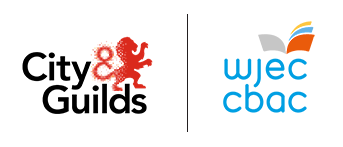
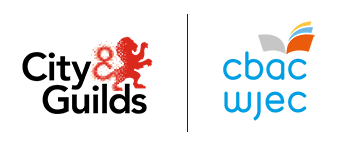



A good diet has a variety of benefits, including:
The body uses water in all its cells, organs and tissues. We lose water through breathing, sweating and digestion.
Rehydration replaces the water we lose and has the following important benefits:
Under the Health and Social Care Act 2008 (Regulated activities) Regulations 2014: Regulation 14 -
The key aspects of this regulation are to make sure that individuals who use health and social care services have adequate nutrition and hydration to sustain life which will have a positive impact upon their growth, health and well-being.
To meet the requirements of this regulation, providers, e.g. care homes, carers providing care at an individual’s home and hospitals, must ensure they give people enough to eat and to meet their nutrition and hydration needs and receive the support they need to do so.
Mae gan ddeiet da amrywiaeth o fuddiannau, gan gynnwys:
Mae’r corff yn defnyddio dŵr yn ei holl gelloedd, organau a meinweoedd. Caiff dŵr ei golli drwy anadlu, chwysu a threulio.
Mae ail-hydradu yn cymryd lle’r dŵr a gollir ac mae ganddo’r buddiannau pwysig canlynol:
O dan Reoliadau Deddf Iechyd a Gofal Cymdeithasol 2008 (Gweithgareddau rheoledig) 2014: Rheoliad 14 -
Agweddau allweddol y rheoliad hwn yw sicrhau bod unigolion sy'n defnyddio gwasanaethau iechyd a gofal cymdeithasol yn cael maeth a hydradiad digonol i gynnal bywyd a fydd yn cael effaith gadarnhaol ar eu twf, iechyd a llesiant.
Er mwyn diwallu gofynion y rheoliad hwn, rhaid i ddarparwyr, e.e. cartrefi gofal, gofalwyr sy'n darparu gofal yng nghartref unigolyn ac ysbytai, sicrhau eu bod yn rhoi digon i bobl fwyta ac i ddiwallu eu hanghenion maeth a hydradiad a'u bod yn derbyn y gefnogaeth sydd arnynt ei hangen i wneud hynny.
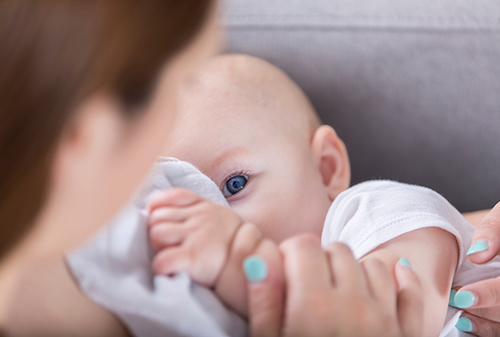
Studies have found that breastfeeding for the first 6 months of life gives a baby the best start in life. The health and developmental benefits for babies include:
Breastfeeding also has a number of health benefits for the mother:
It is recommended that babies who are only given breastmilk in the first 6 months of life should also be given a daily supplement of vitamin D.
In the first 6 months of life, babies will only need breast milk or formula. After this, foods should be introduced gradually to prevent the risk of allergies.
Foods that need to be introduced one at a time include:
Some people may need to modify their diets. This could be due to a choice, such as being vegetarian, or it can be down to having certain medical conditions, such as coeliac disease, which is where a person would not be able to tolerate wheat and would have to exclude it from their diet.
Whatever a person’s dietary needs, ensuring their diet is balanced is a must in order to maintain good health. A poor diet can lead to fatigue, tired looking skin, weight gain and a number of illnesses, which include:
Mae astudiaethau wedi dangos mai bwydo ar y fron am y chwe mis cyntaf mewn bywyd sy’n rhoi’r dechrau gorau mewn bywyd i’r baban. Ymhlith y buddiannau iechyd a datblygiadol i fabanod mae:
Mae i fwydo ar y fron nifer o fuddiannau i’r fam hefyd:
Argymhellir y dylai babanod sydd ond yn cael llaeth o’r fron yn ystod eu chwe mis cyntaf hefyd gael atchwanegiad fitamin D bob dydd.
Yn ystod chwe mis cyntaf bywyd, dim ond llaeth o’r fron neu fformiwla y bydd ei angen ar fabanod. Ar ôl hyn, dylai bwydydd gael eu cyflwyno’n raddol er mwyn atal y risg o alergeddau.
Ymhlith y bwydydd y mae angen eu cyflwyno un ar y tro mae:
Gallai rhai pobl fod angen gwneud newidiadau i’w deiet. Gall hyn fod yn ddewis, megis bod yn llysieuwr, neu oherwydd cyflyrau meddygol penodol, megis cyflwr coeliag, sef pan nad yw person yn gallu bwyta gwenith ac felly yn gorfod ei osgoi yn ei ddeiet.
Beth bynnag yw anghenion deietegol person, mae’n rhaid sicrhau eu bod yn bwyta deiet cytbwys er mwyn cynnal iechyd da. Gall deiet gwael arwain at ludded, croen blinedig, magu pwysau a nifer o afiechydon gwahanol, gan gynnwys:
Hint 2: Lorem ipsum dolor sit amet, consectetur adipisicing elit. Modi est praesentium earum exercitationem, accusantium molestiae asperiores reiciendis aliquam doloribus, delectus, cumque odio omnis rem, aliquid et. Quisquam eius, incidunt ab.
Awgrymiadau 2: Lorem ipsum dolor sit amet, consectetur adipisicing elit. Modi est praesentium earum exercitationem, accusantium molestiae asperiores reiciendis aliquam doloribus, delectus, cumque odio omnis rem, aliquid et. Quisquam eius, incidunt ab.
Note the advantages and disadvantages of breastfeeding.
Nodwch fanteision ac anfanteision bwydo ar y fron.
| Advantages | Disadvantages |
|---|---|
| Manteision | Anfanteision |
|---|---|
Suggested answers:
Atebion awgrymedig:
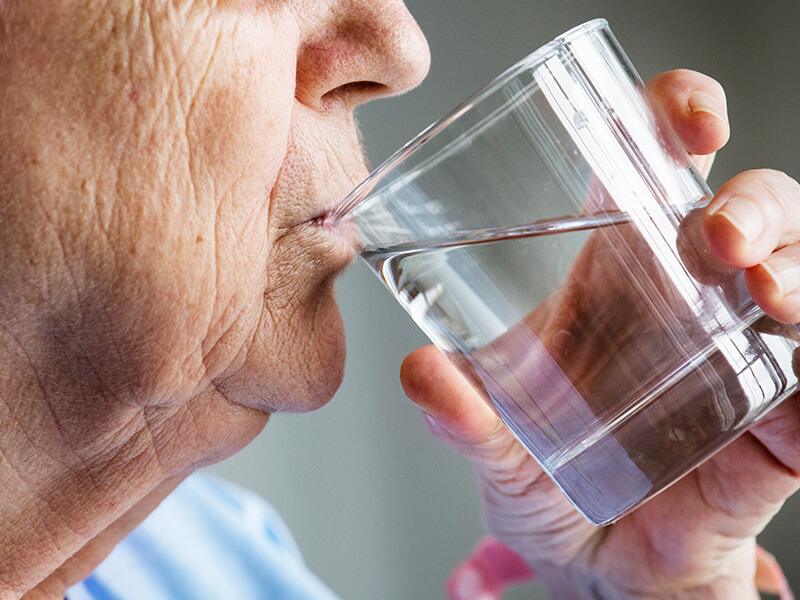
Design a leaflet for new carers starting at their local care home. You will need to include:
Dyluniwch daflen ar gyfer gofalwyr newydd sy'n cychwyn yn eu cartref gofal lleol. Bydd angen i chi gynnwys:
Hint 4: Lorem ipsum dolor sit amet, consectetur adipisicing elit. Modi est praesentium earum exercitationem, accusantium molestiae asperiores reiciendis aliquam doloribus, delectus, cumque odio omnis rem, aliquid et. Quisquam eius, incidunt ab.
Awgrymiadau 4: Lorem ipsum dolor sit amet, consectetur adipisicing elit. Modi est praesentium earum exercitationem, accusantium molestiae asperiores reiciendis aliquam doloribus, delectus, cumque odio omnis rem, aliquid et. Quisquam eius, incidunt ab.
Rank the colours of urine from hydrated to dehydrated. Drag the colours of urine to the correct number.
Rhowch sgôr i liwiau'r wrin o hydradol i ddadhydredig. Llusgwch liwiau'r wrin i'r rhif cywir.
Warning! This resource is not optimised for use on mobile devices.
Rhybudd! Ni ellir defnyddio’r adnodd yma ar ffonau symudol neu dabled.
Well done. You have matched them all correctly.
Da iawn. Rydych wedi paru pob un yn gywir.
|
Terms
Termau
|
Definitions
Diffiniadau
|
Correct answers
Atebion cywir
|
|---|
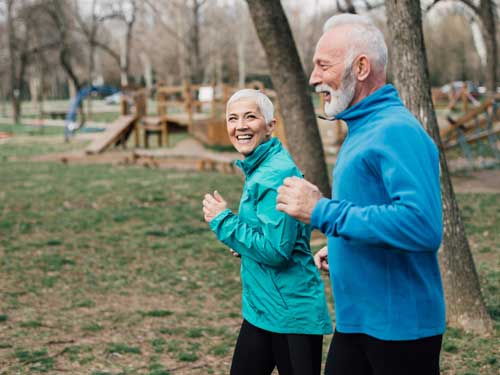
Being physically active on a daily basis can affect health, development and well-being in a number of positive ways. The amount of exercise an individual should be doing varies, depending on their age and life stage.
Most children will have the ability to run and walk but they will need to be given opportunity to practice other skills, such as hopping, jumping, throwing and catching. Outdoor play allows them the space to do this. These types of activities will have physical benefits, including:
Play is essential to the development of babies and children because it contributes to their cognitive, physical, social and emotional well-being.
Play promotes brain development and learning in babies and young children.
It also decreases the risk of developing health conditions like cardiovascular disease, diabetes and obesity.
Babies, toddlers and pre-schoolers should be encouraged to move as much as possible through active play. This will have the following positive effects:
For children to stay healthy they need to ensure that they do three types of activities each week:
Exercise at this age will have the following positive benefits:
Exercise is extremely important for individuals during adolescence because it helps maintain their physical and mental health. Individuals aged between 13 and 19 should strive for at least 60 minutes of moderate to vigorous physical activity every day (Teens health).
The following, according to the NHS, count as moderate activities:
To stay healthy, adults should do aerobic and strengthening activities each week.
This could include playing football or going to dance classes to build aerobic capacity, and gardening, weightlifting or yoga to strengthen muscles.
Exercise will have the following benefits:
In order to ensure that everyday tasks can still be carried out and for general health and well-being, older adults should aim to do aerobic and strengthening exercises.
At this stage of life exercise can have the following benefits:
Gall bod yn gorfforol weithgar bob dydd effeithio ar iechyd, datblygiad a llesiant mewn sawl ffordd gadarnhaol. Mae faint o ymarfer corff y dylai unigolyn fod yn ei wneud yn amrywio, yn dibynnu ar ei oedran a chyfnod ei fywyd.
Bydd y rhan fwyaf o blant yn gallu rhedeg a cherdded ond bydd angen cyfle i ymarfer sgiliau eraill fel hercian, neidio, taflu a dal. Mae chwarae yn yr awyr agored yn eu galluogi i wneud hyn. Bydd gan y mathau hyn o weithgareddau fuddion corfforol, gan gynnwys:
Mae chwarae yn hanfodol i ddatblygiad babanod a phlant am ei fod yn cyfrannu at eu llesiant gwybyddol, corfforol, cymdeithasol ac emosiynol.
Mae chwarae yn hybu datblygiad yr ymennydd ac yn hybu dysgu mewn babanod a phlant ifanc.
Mae hefyd yn lleihau’r risg o ddatblygu cyflyrau iechyd fel clefyd cardiofasgwlar, diabetes a gordewdra.
Dylai babanod, plant bach a phlant dan oed ysgol gael eu hannog i symud cymaint â phosibl drwy chwarae gweithredol. Bydd hyn yn cael yr effeithiau cadarnhaol dilynol:
Er mwyn i blant gadw'n iach mae angen iddynt sicrhau eu bod yn gwneud tri math o weithgareddau bob wythnos:
Bydd ymarfer corff yn yr oedran hwn yn arwain at y buddion cadarnhaol dilynol:
Mae ymarfer corff yn hynod bwysig i unigolion yn ystod llencyndod oherwydd ei fod yn helpu i gynnal eu hiechyd corfforol a meddyliol. Dylai unigolion rhwng 13 a 19 oed anelu at wneud o leiaf 60 munud o weithgarwch corfforol cymedrol i egnïol bob dydd (Teens health).
Mae'r dilynol, yn ôl y GIG, yn cyfrif fel gweithgareddau cymedrol:
Er mwyn cadw'n iach, dylai oedolion wneud gweithgareddau aerobig a chryfhau bob wythnos.
Gallai hyn gynnwys chwarae pêl-droed neu fynd i ddosbarthiadau dawns er mwyn cynyddu gallu aerobig, a garddio, codi pwysau neu ioga i gryfhau’r cyhyrau.
Bydd ymarfer corff yn arwain at y buddion dilynol:
Er mwyn sicrhau y gellir cyflawni tasgau bob dydd o hyd ac ar gyfer iechyd a llesiant cyffredinol, dylai oedolion hŷn anelu at wneud ymarferion aerobig a chryfhau.
Ar y cam bywyd hwn, gall ymarfer corff:
Hint 6: Lorem ipsum dolor sit amet, consectetur adipisicing elit. Modi est praesentium earum exercitationem, accusantium molestiae asperiores reiciendis aliquam doloribus, delectus, cumque odio omnis rem, aliquid et. Quisquam eius, incidunt ab.
Awgrymiadau 6: Lorem ipsum dolor sit amet, consectetur adipisicing elit. Modi est praesentium earum exercitationem, accusantium molestiae asperiores reiciendis aliquam doloribus, delectus, cumque odio omnis rem, aliquid et. Quisquam eius, incidunt ab.
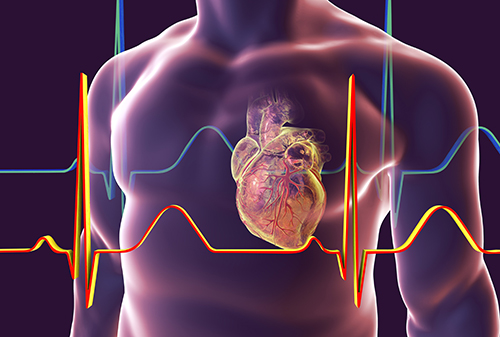
Immediate effects of exercise –
Effects of regular exercise –
Effects on the cardiovascular system
Immediate effects of exercise –
Effects of regular exercise –
Effects on the respiratory system
Immediate effects of exercise –
Effects of regular exercise –
Effeithiau uniongyrchol ymarfer corff -
Effeithiau ymarfer corff rheolaidd -
Effeithiau ar y system gardiofasgwlar
Effeithiau uniongyrchol ymarfer corff -
Effeithiau ymarfer corff rheolaidd -
Effeithiau ar y system resbiradol
Effeithiau uniongyrchol ymarfer corff -
Effeithiau ymarfer corff rheolaidd -
Hint 7: Lorem ipsum dolor sit amet, consectetur adipisicing elit. Modi est praesentium earum exercitationem, accusantium molestiae asperiores reiciendis aliquam doloribus, delectus, cumque odio omnis rem, aliquid et. Quisquam eius, incidunt ab.
Awgrymiadau 7: Lorem ipsum dolor sit amet, consectetur adipisicing elit. Modi est praesentium earum exercitationem, accusantium molestiae asperiores reiciendis aliquam doloribus, delectus, cumque odio omnis rem, aliquid et. Quisquam eius, incidunt ab.
| QuestionCwestiwn | Your ResponseEich Ymateb | Suggested ResponseYmateb Awgrymedig |
|---|
Hint 8: Lorem ipsum dolor sit amet, consectetur adipisicing elit. Modi est praesentium earum exercitationem, accusantium molestiae asperiores reiciendis aliquam doloribus, delectus, cumque odio omnis rem, aliquid et. Quisquam eius, incidunt ab.
Awgrymiadau 8: Lorem ipsum dolor sit amet, consectetur adipisicing elit. Modi est praesentium earum exercitationem, accusantium molestiae asperiores reiciendis aliquam doloribus, delectus, cumque odio omnis rem, aliquid et. Quisquam eius, incidunt ab.
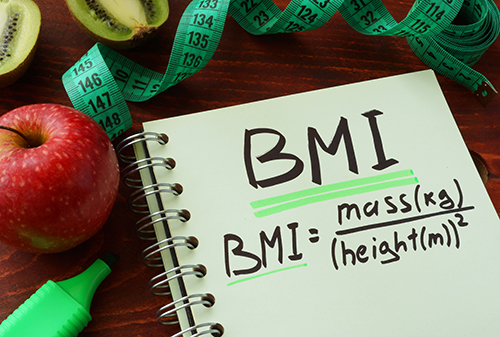
BMI measures the body fat of an individual. It is determined using the height and weight of an individual.
Use the following BMI calculator to work out your BMI:
It is important to remember that if someone has a high level of muscle it may lead to a higher reading, which could indicate that an individual is overweight which is not the case!
Mae BMI yn mesur braster corff unigolyn. Mae’n cael ei gyfrifo gan ddefnyddio taldra a phwysau unigolyn.
Defnyddiwch y gyfrifiannell BMI ddilynol i gyfrifo eich BMI:
Mae'n bwysig cofio, os oes gan rywun lefel uchel o gyhyrau, y gallai arwain at ddarlleniad uwch, a allai ddangos bod unigolyn dros ei bwysau, ac nid yw hynny'n wir!
Hint 9: Lorem ipsum dolor sit amet, consectetur adipisicing elit. Modi est praesentium earum exercitationem, accusantium molestiae asperiores reiciendis aliquam doloribus, delectus, cumque odio omnis rem, aliquid et. Quisquam eius, incidunt ab.
Awgrymiadau 9: Lorem ipsum dolor sit amet, consectetur adipisicing elit. Modi est praesentium earum exercitationem, accusantium molestiae asperiores reiciendis aliquam doloribus, delectus, cumque odio omnis rem, aliquid et. Quisquam eius, incidunt ab.
Read each scenario and then give recommendations on how to improve physical health.
Darllenwch bob senario ac yna rhowch argymhellion ar sut i wella iechyd corfforol.
| QuestionCwestiwn | Your ResponseEich Ymateb | Suggested ResponseYmateb Awgrymedig |
|---|
Hint 10: Lorem ipsum dolor sit amet, consectetur adipisicing elit. Modi est praesentium earum exercitationem, accusantium molestiae asperiores reiciendis aliquam doloribus, delectus, cumque odio omnis rem, aliquid et. Quisquam eius, incidunt ab.
Awgrymiadau 10: Lorem ipsum dolor sit amet, consectetur adipisicing elit. Modi est praesentium earum exercitationem, accusantium molestiae asperiores reiciendis aliquam doloribus, delectus, cumque odio omnis rem, aliquid et. Quisquam eius, incidunt ab.

Educational experiences can be a positive or negative influence on growth, health and well-being.
Gall profiadau addysgol fod yn ddylanwad cadarnhaol neu negyddol ar dwf, iechyd a llesiant.
Hint 11: Lorem ipsum dolor sit amet, consectetur adipisicing elit. Modi est praesentium earum exercitationem, accusantium molestiae asperiores reiciendis aliquam doloribus, delectus, cumque odio omnis rem, aliquid et. Quisquam eius, incidunt ab.
Awgrymiadau 11: Lorem ipsum dolor sit amet, consectetur adipisicing elit. Modi est praesentium earum exercitationem, accusantium molestiae asperiores reiciendis aliquam doloribus, delectus, cumque odio omnis rem, aliquid et. Quisquam eius, incidunt ab.
| QuestionCwestiwn | Your ResponseEich Ymateb | Suggested ResponseYmateb Awgrymedig |
|---|
Hint 12: Lorem ipsum dolor sit amet, consectetur adipisicing elit. Modi est praesentium earum exercitationem, accusantium molestiae asperiores reiciendis aliquam doloribus, delectus, cumque odio omnis rem, aliquid et. Quisquam eius, incidunt ab.
Awgrymiadau 12: Lorem ipsum dolor sit amet, consectetur adipisicing elit. Modi est praesentium earum exercitationem, accusantium molestiae asperiores reiciendis aliquam doloribus, delectus, cumque odio omnis rem, aliquid et. Quisquam eius, incidunt ab.
Use the thought shower to note as many ways of supporting language development as you can think of.
Defnyddiwch y gawod syniadau i nodi cynifer o ddulliau o gefnogi datblygiad iaith ag y gallwch.
Within your local school there should be opportunities to promote language development to all individuals, especially individuals who live with language disorders. Your answers should state how language development could be promoted for individuals of different age groups: infants 0-2 years, children 3-12 years and adolescents 13-19 years.
O fewn eich ysgol leol dylai fod cyfleoedd i hyrwyddo datblygiad iaith i bob unigolyn, yn arbennig unigolion sy'n byw ag anhwylderau iaith. Dylai eich atebion nodi sut y gellid hyrwyddo datblygiad iaith ar gyfer unigolion o wahanol grwpiau oedran: babanod 0-2 oed, plant 3-12 oed a phobl ifanc 13-19 oed.
Suggested answers:
Atebion awgrymedig:
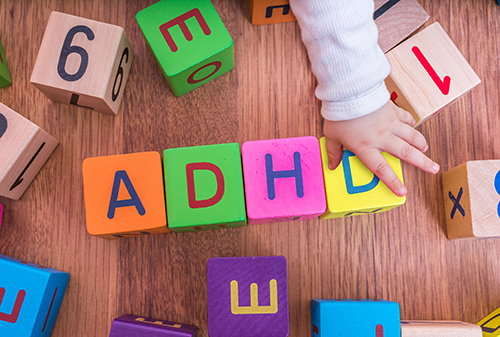
Prepare a fact sheet highlighting what is meant by behavioural disorders. Explain how being diagnosed with a behavioural disorder could have positive and negative effects on individuals’ growth, health and well-being. You should also include what support is available for individuals and their families in helping them reach important milestones.
Two behavioural disorders which you could write about are:
Paratowch ddalen ffeithiau sy'n amlygu'r hyn a olygir gan anhwylderau ymddygiadol. Esboniwch sut y gallai cael diagnosis o anhwylder ymddygiadol gael effeithiau cadarnhaol a negyddol ar dwf, iechyd a llesiant unigolion. Dylech hefyd gynnwys pa gefnogaeth sydd ar gael i unigolion a'u teuluoedd i'w helpu i gyrraedd cerrig milltir pwysig.
Dau anhwylder ymddygiadol y gallech ysgrifennu amdanynt yw:
Hint 14: Lorem ipsum dolor sit amet, consectetur adipisicing elit. Modi est praesentium earum exercitationem, accusantium molestiae asperiores reiciendis aliquam doloribus, delectus, cumque odio omnis rem, aliquid et. Quisquam eius, incidunt ab.
Awgrymiadau 14: Lorem ipsum dolor sit amet, consectetur adipisicing elit. Modi est praesentium earum exercitationem, accusantium molestiae asperiores reiciendis aliquam doloribus, delectus, cumque odio omnis rem, aliquid et. Quisquam eius, incidunt ab.